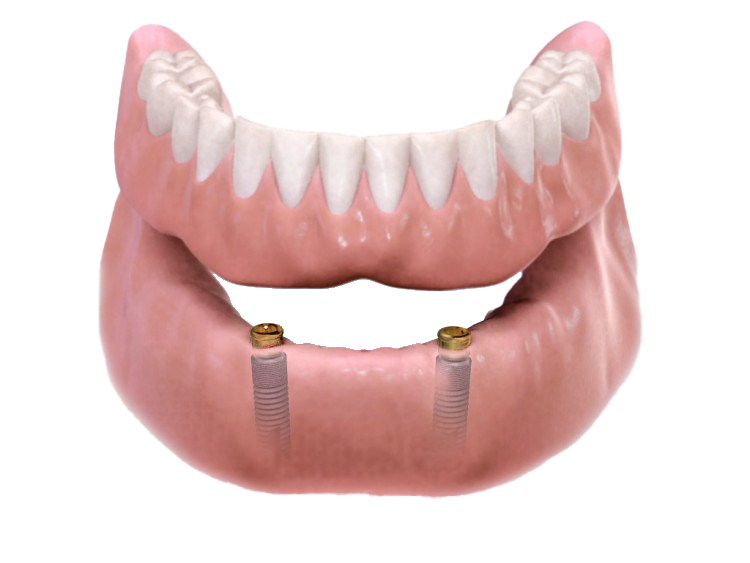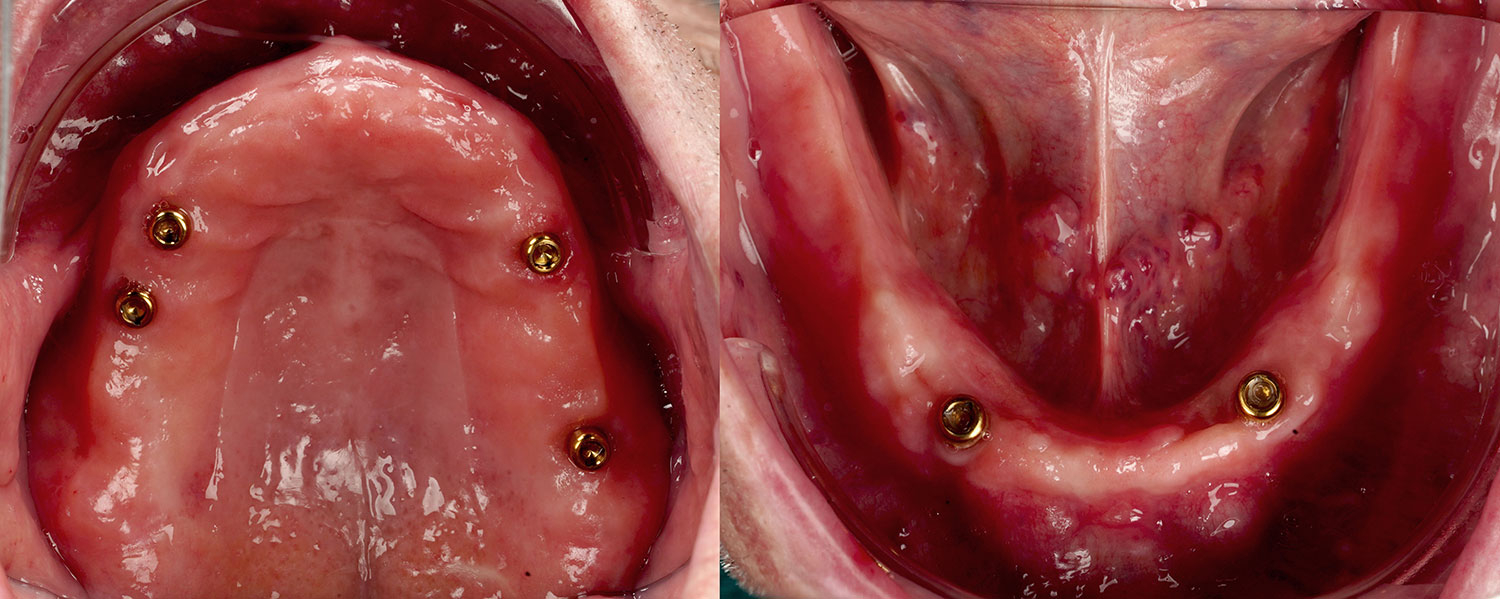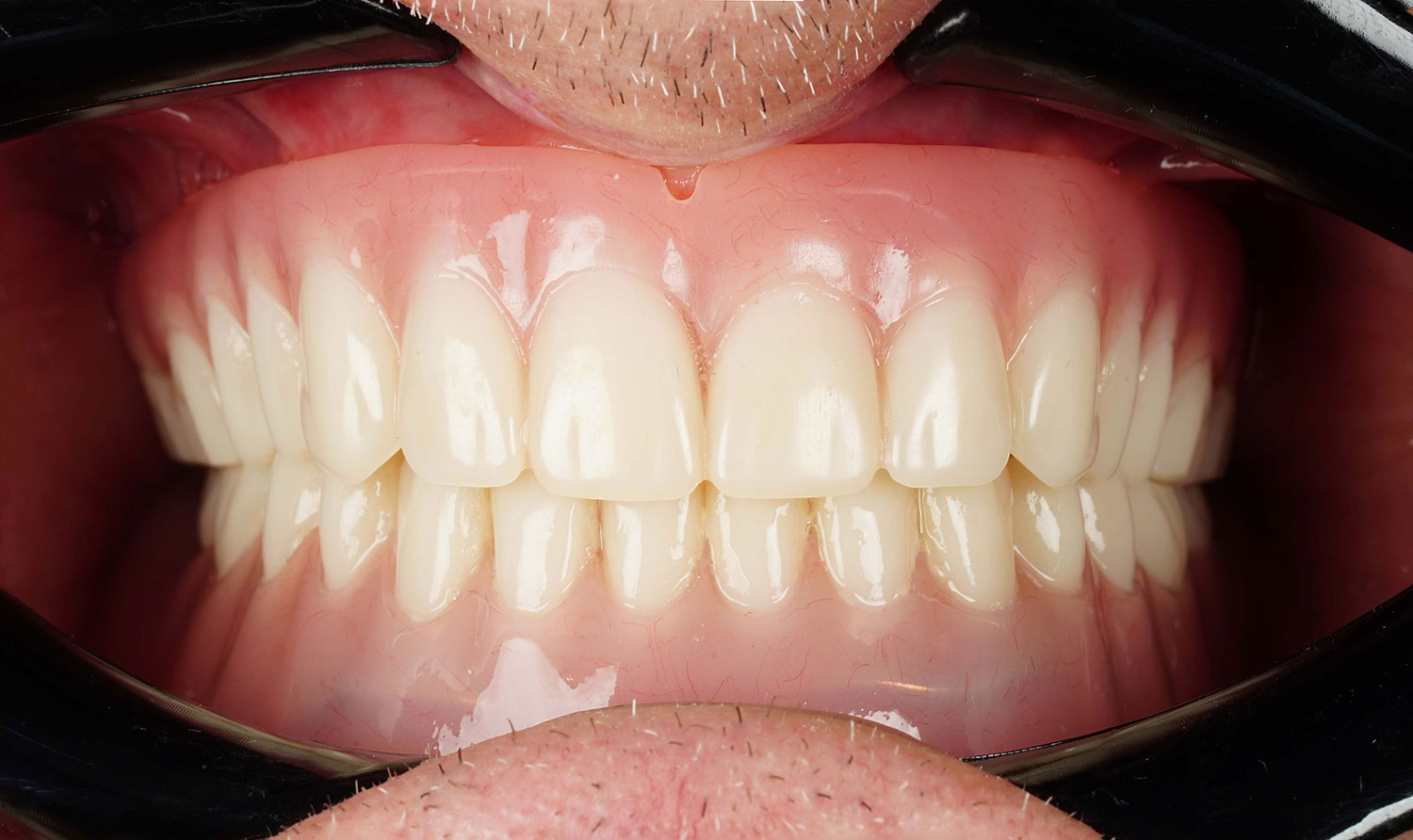Implant-Retained Overdenture
A New Option for Improved Quality of Life for Those with Complete Tooth Loss
For individuals who have lost all their teeth, traditional full dentures have long been a treatment option. However, many patients experience issues with denture stability, such as movement while chewing or speaking, which can be bothersome, reduce confidence, and affect daily quality of life.Implant-Retained Overdenture combines the benefits of dental implants with removable dentures, providing greater stability and efficiency compared to conventional dentures.
What is an Implant-Retained Overdenture?
It is a removable denture that is attached to dental implants embedded in the jawbone. The connection is made through special attachments, such as Ball, Locator, or Bar attachments, which secure the denture in place while allowing it to be removed for cleaning.

Removable denture secured with dental implants using a Locator attachment.
Advantages of Implant-Retained Overdenture:
- Increased stability and reduced movement of dentures: The dentures are securely attached, allowing patients to chew, speak, and smile with more confidence without worrying about dentures slipping.
- Improved chewing efficiency: With more stable dentures, patients can chew food better, ensuring adequate and diverse nutrition intake.
- Reduced irritation and gum pain: Less movement reduces friction against gums and soft tissues, decreasing oral sores and gum pain.
- Preservation of jawbone structure: Implants stimulate the bone, reducing bone resorption that typically occurs without teeth.
- Enhanced confidence and quality of life: Patients can live more normally, with increased confidence in social interactions and activities
Who is suitable for an Implant-Retained Overdenture?
- Individuals who have lost all teeth and seek more stable dentures than conventional ones.
- Those who have issues with loose traditional removable dentures.
- Those with sufficient jawbone volume for 2-4 implants per jaw.
- Individuals in generally good health who can maintain good oral hygiene.
Considerations:
While Implant-Retained Overdentures offer many benefits, there are considerations such as higher costs compared to regular dentures and a multi-step treatment process, including the time needed for osseointegration.
Case Study: Implant-Retained Overdenture
Patient Information:
A 65-year-old retired German male technician.
Present illness:
The patient presented with loose upper and lower dentures that were uncomfortable and ineffective, causing difficulty in chewing, unclear speech, and gum pain.
Medical History:
The patient has controlled hypertension managed with medication. No drug allergies or conditions affecting bone healing.
Clinical and Radiographic Examination:
Oral examination:
Upper jaw: Bridge from teeth 12-23, grade 1 mobility, slightly loose upper denture.
Lower jaw: Metal telescopic crowns on tooth 34, retained root at tooth 33, very loose lower denture.
Periapical X-rays show decay under crowns on teeth 12, 23 and deep decay under crowns on teeth 11, 22. CBCT: Adequate bone volume in both jaws for at least 2-4 implants each, with no significant pathology.
Diagnosis:
12, 23, 33 Retained roots
11, 22 Recurrent decay at
Normal upper and lower ridges.
Poor fitting removable dentures.
Treatment Plan:
After explaining treatment options such as new dentures, fixed bridges on implants, or Implant-Retained Overdentures, the patient chose the latter for maximum stability with removable cleaning.
Step 1: Implant surgery with 4 implants in the upper jaw at positions 16, 13, 23, 25, and 2 in the lower jaw at positions 33 and 43 using a 3D guide.
Step 2: Wait approximately 3 months for osseointegration, during which temporary dentures are worn without pressure on implants.
Step 3: Take impressions for new removable dentures with Locator attachments.
Step 4: Fit upper and lower dentures, pick up hosing to secure dentures to implants, adjust the bite, and provide care instructions.
Follow-up:
Weekly follow-ups until normal function is achieved, then maintenance every 6 months.




